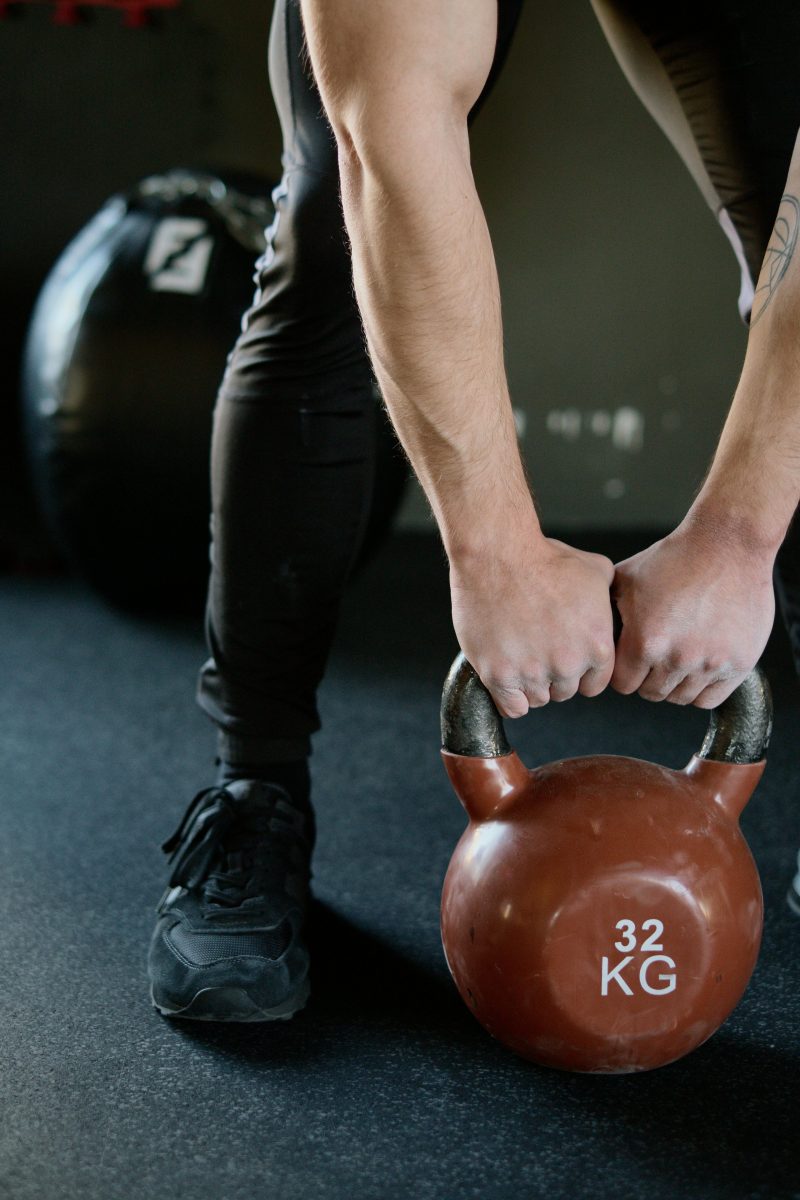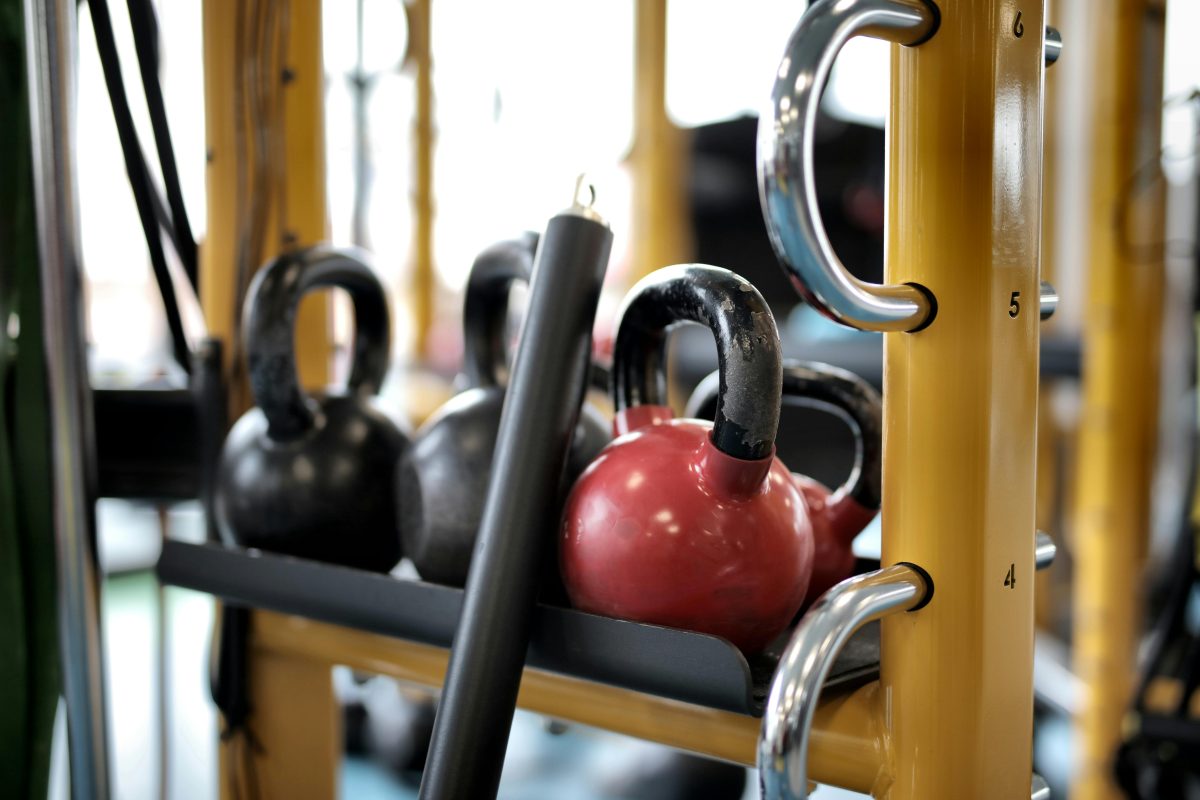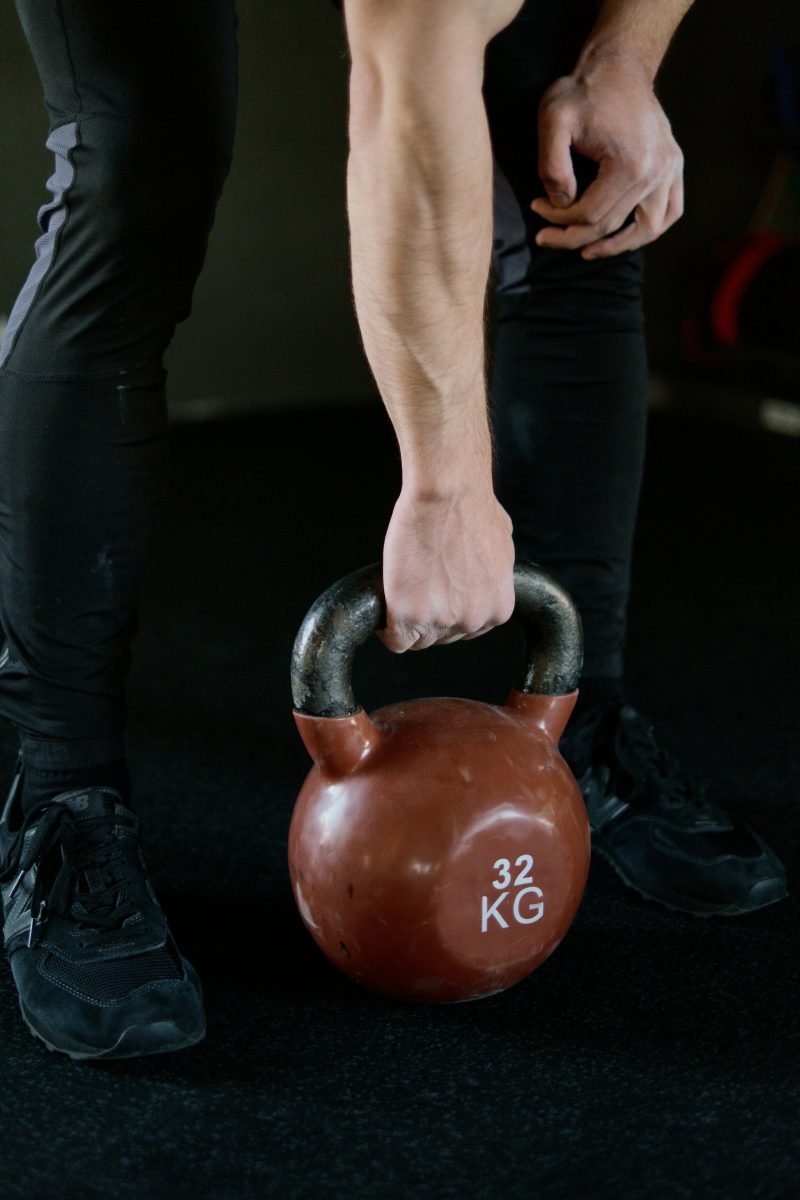Last Updated on: 14th July 2024, 09:38 am
Introduction to Kettlebell Training

Tracing its roots back to 18th-century Russia, kettlebell training was initially a measure of strength and endurance among athletes and military personnel. Fast forward to today, this ancient tool has seamlessly integrated into modern fitness regimes, gaining popularity for its versatility and effectiveness. Unlike traditional weight training, kettlebells offer a unique blend of cardiovascular, strength, and flexibility training in a compact, spherical cast-iron package.
The allure of kettlebell training lies in its simplicity and the dynamic nature of the exercises. Swings, snatches, and presses engage multiple muscle groups simultaneously, making workouts not only efficient but also challenging and engaging. This holistic approach to fitness ensures that no muscle is left behind, promoting balance, agility, and strength in a way that few other tools can.
- Enhances functional strength
- Improves posture
- Skyrockets calorie burn
Whether you’re a seasoned athlete or a fitness novice, incorporating kettlebells into your workout regime can unlock new levels of physical prowess and vitality.
Understanding the Basics of Kettlebell Training

Types of Kettlebells and How to Choose the Right One
Kettlebells come in two main varieties: classic cast-iron and competition (steel). The cast-iron kettlebells increase in size with weight, suitable for general fitness. Competition kettlebells, however, remain the same size regardless of weight, designed for professional athletes to maintain consistency in training. Beginners should start with a weight that challenges yet allows for proper form, typically ranging from 8kg (18lbs) for women to 16kg (35lbs) for men.
Fundamental Kettlebell Grips and Stances for Beginners
- Hook grip for swings
- Rack grip for squats
- Correct stance: slightly wider than shoulder-width with toes pointed out
Safety Tips to Prevent Injuries During Kettlebell Exercises
- Start with a proper warm-up
- Keep your back straight and engage your core
- Focus on form over speed or weight
- Wear appropriate footwear
Embracing kettlebell training with the right equipment, knowledge of fundamental techniques, and adherence to safety practices paves the way for a transformative fitness journey.
Core Kettlebell Exercises for Beginners

The Kettlebell Swing: Technique and Variations
The kettlebell swing is the cornerstone of kettlebell training, targeting the posterior chain muscles crucial for power and posture. Starting with feet shoulder-width apart, hinge at the hips to swing the kettlebell between your legs, then thrust your hips forward to propel it up to chest height. It’s a dynamic move, blending strength with endurance. Variations, like the one-handed swing, introduce complexity and challenge your stability further.
The Kettlebell Goblet Squat: Form and Benefits
Holding the kettlebell close to your chest, the goblet squat not only strengthens the legs and glutes but also challenges the core and improves flexibility. Your feet should be slightly wider than shoulder-width, toes pointed out. Descend into a squat, keeping your chest up and back straight, then drive through your heels to return to standing. This exercise is a full-body movement, enhancing functional strength and mobility.
The Turkish Get-Up: Step-by-Step Breakdown
The Turkish get-up is a complex, multi-step exercise that works several muscle groups and joints across the body. Starting from lying down, you’ll move to a seated position, then to kneeling, and finally stand up, all while keeping the kettlebell raised above you. This exercise improves coordination, balance, and overall strength. It’s a testament to the versatility and comprehensive nature of kettlebell training, offering both strength and conditioning benefits.
Advancing Your Kettlebell Training

Progressing from Beginner to Intermediate Exercises
As you master the basics, it’s time to elevate your kettlebell training. Transitioning to intermediate exercises means increasing the weight and complexity of movements. Incorporate exercises like the kettlebell clean, snatch, and the windmill. These not only challenge your strength but also your coordination and flexibility. Gradual progression is key; ensure you’re comfortable with current exercises before advancing.
Incorporating Kettlebell Flows into Your Routine
Kettlebell flows, a series of movements performed fluidly and without rest, can significantly enhance your training. They improve cardiovascular endurance, agility, and strength. Start with simple two-move flows and gradually integrate more complex sequences. This dynamic approach keeps workouts engaging and challenges the body in new ways.
Tips for Creating a Balanced Kettlebell Workout Plan
- Include a mix of strength, flexibility, and endurance training
- Begin with a warm-up focusing on mobility
- Incorporate a variety of exercises targeting different muscle groups
- Include both bilateral and unilateral movements
- Allow for adequate rest and recovery
Advancing your kettlebell training requires patience, persistence, and a well-thought-out plan. Embrace the journey, and enjoy the myriad of benefits that come with progressing through your kettlebell training journey.
The Benefits of Kettlebell Training

Kettlebell training, a dynamic and versatile workout method, offers a plethora of benefits that cater to a wide range of fitness goals. At its core, this form of exercise is about enhancing strength and endurance. The unique design of kettlebells and the momentum involved in their use engage multiple muscle groups simultaneously. This not only builds muscular strength but also improves endurance, as the body learns to sustain effort over longer periods.
Flexibility and balance are also key benefits of kettlebell training. The fluid movements required to swing, lift, and control the kettlebell demand a high degree of coordination and core stability. This, in turn, improves overall balance and flexibility, making everyday movements easier and reducing the risk of injury.
Moreover, kettlebell exercises are excellent for boosting cardiovascular health. The combination of strength training with dynamic movement increases heart rate, promoting better blood circulation and lung capacity. This cardiovascular improvement is akin to what one might achieve through traditional aerobic exercises but in a more engaging and efficient manner.
Lastly, kettlebell training is highly effective for those looking to lose weight and tone muscles. The high-intensity nature of kettlebell workouts means that they burn a significant amount of calories, contributing to fat loss. Simultaneously, the resistance aspect of the exercises helps in muscle toning and sculpting, offering a dual benefit that is hard to match.
Integrating kettlebell training into your fitness regimen can thus unlock new levels of physical fitness, from enhanced strength and endurance to improved flexibility, balance, and cardiovascular health, not to mention its significant contributions to weight loss and muscle toning. It’s a comprehensive workout solution that addresses multiple fitness objectives efficiently and effectively.
Integrating Kettlebell Training into Your Fitness Routine

Starting Kettlebell Training Safely and Effectively
- Begin with lighter weights to focus on form and technique.
- Engage a certified trainer to ensure correct execution of movements.
- Gradually increase weight as strength and confidence grow, prioritizing form to prevent injury.
Combining Kettlebell Workouts with Other Forms of Exercise
- Kettlebell and Yoga/Pilates: Enhances flexibility and core strength.
- Kettlebell and Cardio: Creates a well-rounded regimen, challenging the body in various ways.
Setting Realistic Goals and Tracking Progress
- Set achievable goals to maintain motivation and measure progress.
- Track workouts, noting weights, reps, and personal bests, to monitor progress.
Integrating kettlebell training into your routine is a journey of personal growth and physical development. With each swing, press, or snatch, you’re not just lifting weight—you’re building a stronger, more resilient body. Start with intention, proceed with caution, and watch as kettlebell training revolutionizes your fitness experience.
Overcoming Common Challenges in Kettlebell Training

Addressing Plateaus in Strength and Endurance Gains
- Reassess your routine when progress stalls, introducing variations in weight, reps, and exercises.
- Incorporate interval training to boost both strength and endurance.
Adjusting Your Routine to Prevent Boredom or Burnout
- Rotate exercises regularly and challenge yourself with new movements.
- Try kettlebell flows, sequences of exercises performed fluidly in a chain, for a dynamic workout.
- Set short-term goals for a sense of achievement and motivation.
Seeking Professional Guidance and Community Support
- Seek the guidance of a certified kettlebell instructor for personalized advice and technique correction.
- Join a kettlebell class or online community for support and motivation from fellow enthusiasts.
Overcoming these common challenges in kettlebell training requires a blend of strategic adjustments, continuous learning, and community support. By addressing plateaus with smart modifications, injecting variety to prevent boredom, and seeking guidance and camaraderie, you can sustain and even accelerate your progress, unlocking the full potential of kettlebell training.
In Closing
Kettlebell training transforms fitness. It’s a journey of strength, flexibility, and endurance. By balancing rigorous challenges with strategic progression, individuals unlock remarkable physical and mental benefits. This method not only cultivates a resilient body but also fosters a community of like-minded enthusiasts. Embrace the kettlebell path, and witness your own evolution in fitness and beyond.
Kettlebell Training: Basics and Benefits FAQs
Yes, beginners can do kettlebell training, but it’s important to start with basic movements and lighter weights to master form and technique. Starting with foundational exercises like kettlebell swings, deadlifts, and squats helps build a base for more complex movements. It’s also advisable for beginners to seek guidance from a certified kettlebell instructor to ensure proper form and prevent injuries.
Kettlebell training can be highly effective for weight loss because it combines strength training with high-intensity cardiovascular exercise. This combination increases muscle mass and boosts metabolism, leading to higher caloric burn both during and after workouts. Consistency and a balanced diet are key components to achieving weight loss goals with kettlebell training.
Kettlebell training focuses on movements that are more dynamic and functional compared to the often stationary lifts of traditional weightlifting. It emphasizes full-body conditioning, enhancing not just strength but also balance, agility, and endurance. The unique shape and handling of kettlebells also engage stabilizing muscles, offering a more comprehensive workout.
For most people, training with kettlebells 2-3 times per week allows for adequate recovery and maximizes the benefits of the workout. Consistency and progression in both weight and complexity of movements are key to seeing improvements. Balancing kettlebell training with other forms of exercise and rest days is crucial for overall fitness and injury prevention.
Kettlebell training is safe when performed with proper form and technique, and when an appropriate weight is used. Like any form of exercise, the risk of injury exists, especially if exercises are performed with poor form or too much weight too soon. It’s beneficial to learn from a certified kettlebell instructor to ensure safety and effectiveness.
Common kettlebell exercises include the swing, goblet squat, Turkish get-up, snatch, and clean and press. These movements target multiple muscle groups, offering a full-body workout in a single session. Each exercise can be modified to suit different fitness levels and goals.
Kettlebell training offers a wide range of benefits including improved strength, endurance, flexibility, and balance. It also promotes fat loss by combining strength training with high-intensity cardio, leading to high caloric expenditure. Additionally, the functional movements used in kettlebell exercises improve daily movement efficiency and reduce the risk of injury.
Kettlebell training is a form of strength and conditioning exercise that utilizes a cast-iron or cast steel ball with a handle attached to the top. It combines cardiovascular, strength, and flexibility training in a variety of movements. Exercises often involve swinging, lifting, and holding the kettlebell in ways that engage multiple muscle groups simultaneously.
For kettlebell training, wear comfortable, breathable clothing that allows for a full range of motion. Shoes with minimal cushioning are preferred to maintain a better connection with the ground, enhancing stability and balance during exercises. Avoid loose clothing that could get caught in the kettlebell during dynamic movements.
The starting size of a kettlebell depends on your current fitness level and the type of exercises you plan to do. Generally, men might start with a 16kg kettlebell, while women might start with an 8kg or 12kg kettlebell for swings and general exercises. However, for movements that require more control and less weight, such as the Turkish get-up, starting with a lighter kettlebell is recommended.
Orlando is a all round athlete from Australia, now resident in Germany. His sports of passion of American Football(Offensive line), weight training and indoor rock climbing where he uses his 195cm wing span to his advantage.



